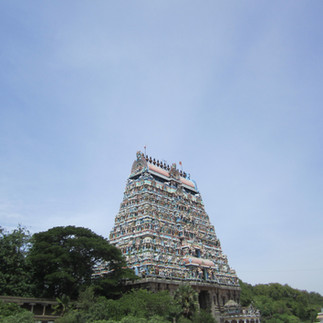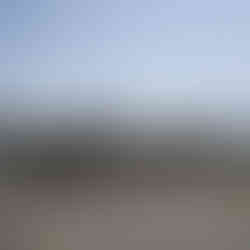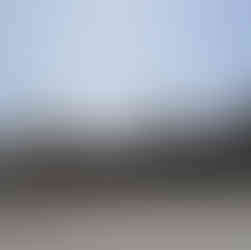Temples of Tamil Nadu and Pondicherry #35: Natarajar Temple, Chidambaram
- Sudharshan
- Mar 30, 2024
- 4 min read
Updated: Dec 11, 2024
சிதம்பரம் நடராஜர் திருக்கோயில்
Perhaps the most important Sivasthalam in the Tamil country, the Sivan temple at Chidambaram is a much revered temple for Saivite Tamils. Here the Lord is worshipped in three distinct ways, as the Lord of the Cosmic Dance, Nataraja, as a crystallized lingam and as formless space in the sanctum sanctorum. Steeped in Saivite Hindu symbolism, it embodies deep concepts like the cycle of creation and destruction of the universe and the formlessness of the almighty. It is we humans who give the Lord familiar forms after all. The well known icon of Shiva as Nataraja appears to have originated here. It is one of the five Pancha Bootha Sthalams and the Lord here represents the sky or space. It is also one of the Pancha Sabhas and here the Lord performed the Dance of Joy or Ecstasy, the Ananda Thandavam. The importance of this temple is so great that ancient texts refer to it simply as "the temple" or Koil.
The Sangam era literature refer to a temple here but do not always refer to it as Chidambaram but by various other names. The temple is immortalized in Thevaram by all three of the Moovar, Thirugnasampanthar, Thirunavukkarasar and Sundaramoorthy Nayanar. Manikkavasagar spent a lot of time here composing the Thiruvasagam. In the 11th century, the Thevaram compositions in Olai Chuvadi ( palm leaf manuscripts) were discovered here in a back room and salvaged by Raj Raja Cholan I and Nambiandar Nambi, after being lost for many decades. The name Thiruchitrambalam is invoked at the beginning and end of the recitation of the Thevarams.
Although this temple has likely existed for more than two millennia, its origins and ancient structure are unclear, Purported to have originated in a forest called the Thillai, it has been built, destroyed, plundered, rebuilt and renovated many times. As a Paadal Petra Sthalam, it was present in some form in the 7th century. Pallava, Chola, Pandian, Vijayanagar and Nayakkan kings and many other dynasties have contributed to the development of this temple.The Lord here was the tutelary or family deity of the mighty Chola kings. Many of their coronations happened here. As such, the temple received immense patronage during Chola times. It was expanded and rebuilt as a stone temple by kings like Adityan I and Paranthakan I. Paranthakan is often referred to as the "Ponveintha Perumal" the king who bestowed the golden roof to the temple. The sanctum here is referred to as Ponnambalam (The Golden Hall). There is some evidence that it was called the Ponnambalam before Paranthakan's time. Perhaps he restored a previously dilapidated structure. The great soldier Naralokaviran, commander of Chola forces during the reign of Kulothungan I, is credited with building or rebuilding a lot of the structures here. The Pandian empire that followed, although relatively short-lived, also contributed much to this temple. It was ransacked and almost completely destroyed by the forces of the Delhi Sultanate led by Malik Kafur and in subsequent raids. It was restored by the Vijayanagar kings and the Nayakkar only to be damaged again during the Carnatic wars in the 18th century by British and French forces and during the Anglo-Mysore Wars. Forces belonging to the British East India Company occupied the temple and used it as a camp in the 18th century. The Nattukkottai Chettiar played an important part in restoring and renovating the temple in the 19th century. Today the temple is controlled by the Deekshidar community of hereditary Brahmin priests who have been associated with the temple for hundreds of years.
The temple is a vast 40 acre complex with an ancient core and multiple prakarams enclosed by high walls and gopurams. The outer gopurams in all four cardinal directions are tall and imposing. They are visible from a long distance. They appear to have been first built in the 12th and 13th centuries by later Chola and Pandian kings. They have been rebuilt since. The current north gopuram was built by the Vijayanagara emperor Krishnadevaraya around 1520. The sanctum sanctorum consists of the Chitsabha which houses the shrines of Nataraja, Siva as the Crystal Lingam, the empty space known as the Chidambara Rahasiyam, the Rathinasabapathy or the Nataraja made of ruby and the Govindarajan shrine of Vishnu. This temple is also revered as a Divya Desam temple and is known as Thiruchitrakootam in the Vaisnavite tradition. The Chitsabhai has a roof of golden tiles. The Kanagasabhai where the Lord performs his dance, has a copper roof. The temple walls are adorned with sculptures of the 108 poses from Bharatha Muni's Natyashashtra that form the basis of Bharathanatyam.
Today the temple is at the centre of political controversy regarding its control. It is caught in a tussle between the Deekshidar, the traditional priests who by default have gained control of it and the HR and CE of the Government of Tamil Nadu. As a privately run institution it is dependent on donations for its administration. People visiting the temple are often harassed by the priests for donations and subscriptions which can sometimes negatively impact an otherwise sacred experience. Critics point out that there is no independent accountability or transparency in the way the temple is run. The temple can certainly be maintained better. On the other hand the HR and CE may not be the ideal custodian either, given its sorry record at temples it controls. The Supreme Court has ruled in favour of the Deekshidar for now. Some kind of public oversight and government supervision may be beneficial in maintaining such a historic and culturally important site.
The temple is located in the town of Chidambaram which lies about 65 km or 2 hours south of Pondicherry or 72 km or 2 hours northeast of Kumbakonam.
We visited in July 2010. We were based in Pondicherry.

Credits: Google Maps



























Comments